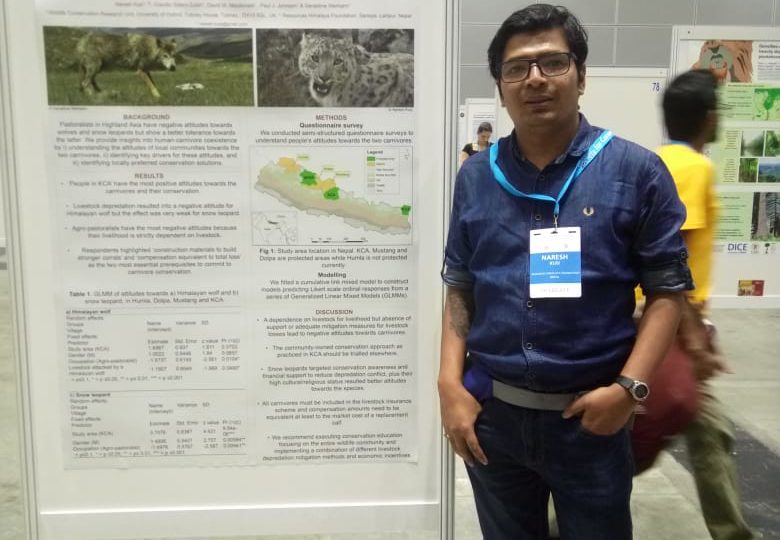Himalayan Wolves Project at the International Congress for Conservation Biology (ICCB) 2019
The 29th International Congress for Conservation Biology (ICCB) was held at Kuala Lumpur, Malaysia from 21-25 July, 2019 with the title theme ‘Conservation Beyond Boundaries: Connecting Biodiversity with Communities, Governments and Stakeholders’.
Naresh Kusi represented the Himalayan Wolves Project and gave a poster presentation titled, ‘Living with Himalayan wolves and snow leopards: A quest for positive coexistence’.
The social survey study explores the attitudes of Himalayan agro-pastoral communities in Nepal towards wolves and snow leopards and provides insights into human-carnivore coexistence. It identifies key drivers for these attitudes and reveals locally preferred conservation solutions. The study found that livestock depredation resulted in negative attitude for wolves but not for snow leopards. Thus, we suggest that carnivore conservation interventions in the Himalayan landscapes should move beyond focusing only on snow leopards but needs to include all large carnivores in livestock insurance schemes (which currently only include snow leopards). Also, the study reveals that financial compensation at present does not cover the market price of the lost livestock and thus local communities are less supportive. We suggest increasing the compensation amount to at least the equivalent of the market cost of a replacement calf. The study found that the community-owned conservation approach, as practiced in Kanchenjunga Conservation Area (KCA), is the most effective among the different management schemes as evidenced by local people in KCA having the most positive attitude towards carnivores.
Local people expressed the need for construction materials to build stronger livestock corrals in these resource-scarce high-altitude landscapes and that the compensation amount needs to be equivalent to the loss. These improvements will aid them to commit to a more long-term sustainable carnivore conservation.
During the poster sessions, a large numbers of conservation biologists from various corners of the world studied and discussed the poster with Naresh with great interest. The fellow scientists agreed with the studies’ suggestion that the carnivore conservation interventions should not be limited to a single species and that it should be more inclusive. They also highlighted the need of incorporating these findings into any future conservation actions to foster a better coexistence between the high Himalayan human communities and the carnivores.

